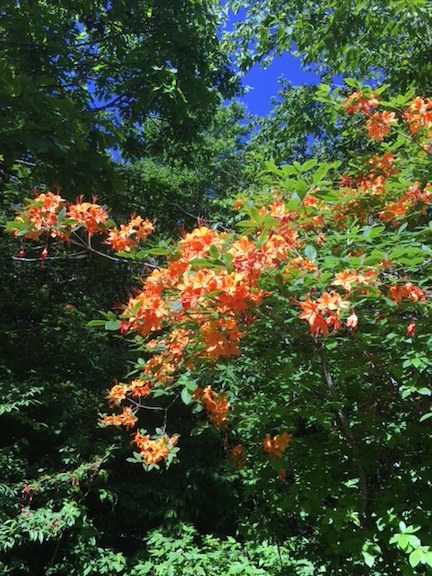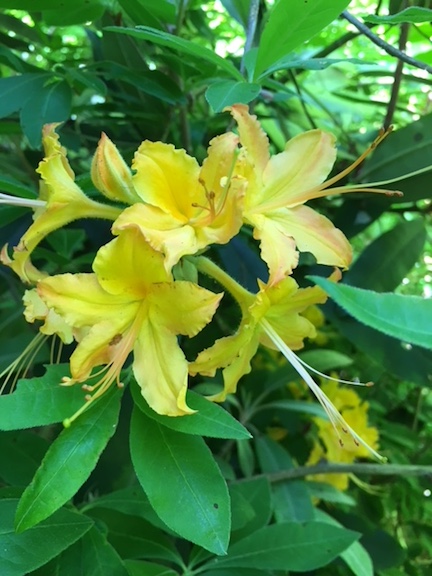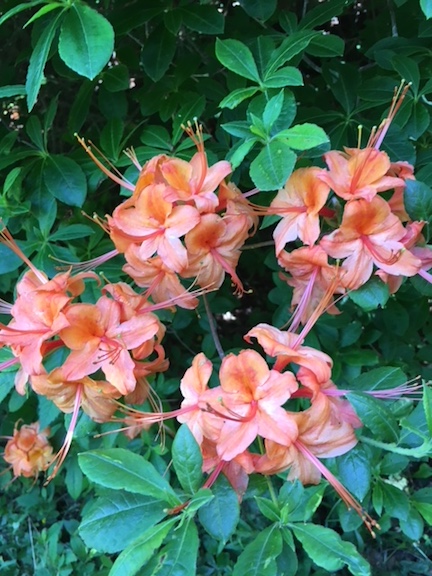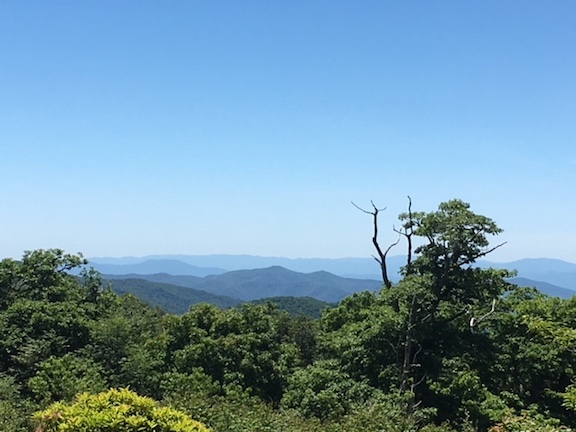My husband, Jack, and I were lucky enough to go hiking in the southern Appalachians this past weekend and were even luckier to see the flame azaleas in full – glory – bloom.

Rhododendron calendulacum is not all that rare and you’ll see lots of them if you drive the Charohala Skyway near the Joyce Kilmer National Forest in North Carolina. But, there is huge variation within the species that offers different colors of bloom in the wild and these variations are becoming increasingly threatened by loss of habitat and the invasion of non-native species
Thanks to the efforts of several volunteer organizations, including Partners of Joyce Kilmer-Slickrock Wilderness and the Mid Atlantic Chapter of the American Rhododendron Society, a grand diversity of the flame azalea is being kept alive and well, particularly on Hooper’s Bald where they are abundant.

On this grassy bald, volunteers have kept invasive plants at bay and have worked for years to hand pollinate select forms and replant seedlings back into the wild to help maintain a great diversity. Their efforts are apparent in huge 10 foot specimens that sport 3 1/2 inch flowers in colors ranging from bright red to yellow to orange and salmon.

I was really interested in seeing that the azalea, like the oak trees in Oregon, held “galls,” growths on the tree that look like misshapen fruit. Unlike the oak gall (see my blog about this from May 20, 2019) azalea galls are not caused by a wasp but by a fungus. When ripe, they are full of water and some people consider them edible, though there is some controversy about this. Though the gall may or may not be toxic, azaleas and rhododendrons are poisonous and should never be consumed.

A “bald” is a phenomenon unique to the southern Appalachian mountains and scientists still can’t quite figure them out. It’s basically just an open place at the crest or side of a mountain. There are two kinds of balds, grassy and heath, and both are devoid of trees.
In more northern regions you would call it an alpine zone but in the south, it’s much too warm for this designation. The forest service has called it an “ecological enigma and a conservation dilemma.” Theories about the origin of the balds includes grazing by prehistoric mastodons and wooly mammoths but no one knows for sure. They do know that European settlers who used the balds for grazing cattle helped maintain them.

But now, many of the balds are found within the Great Smoky National Park and in National Forest land where, of course, there is no grazing and many of them are succumbing to the national progression of succession. We saw evidence of this when we hiked up “Bob’s Bald” and found not only the flame azalea but also acres of Canadian blackberry bushes overtaking the native plants.

The Forest Service, working with volunteer organizations, is trying to maintain these beautiful ecosystems by cutting back invasive shrubs and trees seedlings (which is where the conservation dilemma comes in) but the task is daunting. Most balds are at elevations of above 4,000 feet (Hooper Bald is 5,429) and are accessible only by steep trails.
But hooray and thanks! to all the people who work tirelessly to help the environment in so many different ways. Thanks to them, I’ll be able to show my grandchildren the glory of the flame azalea on Hooper’s Bald.
